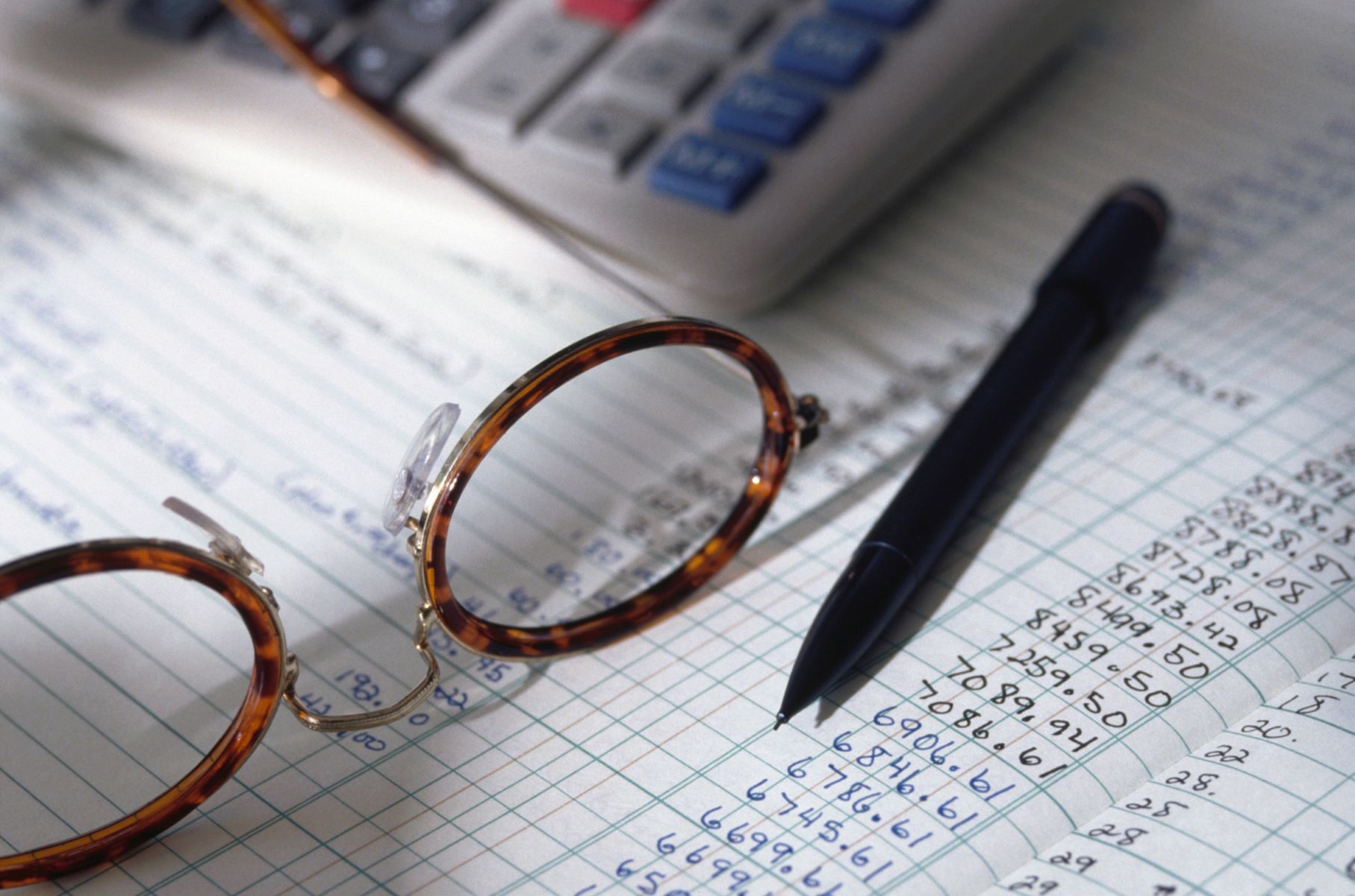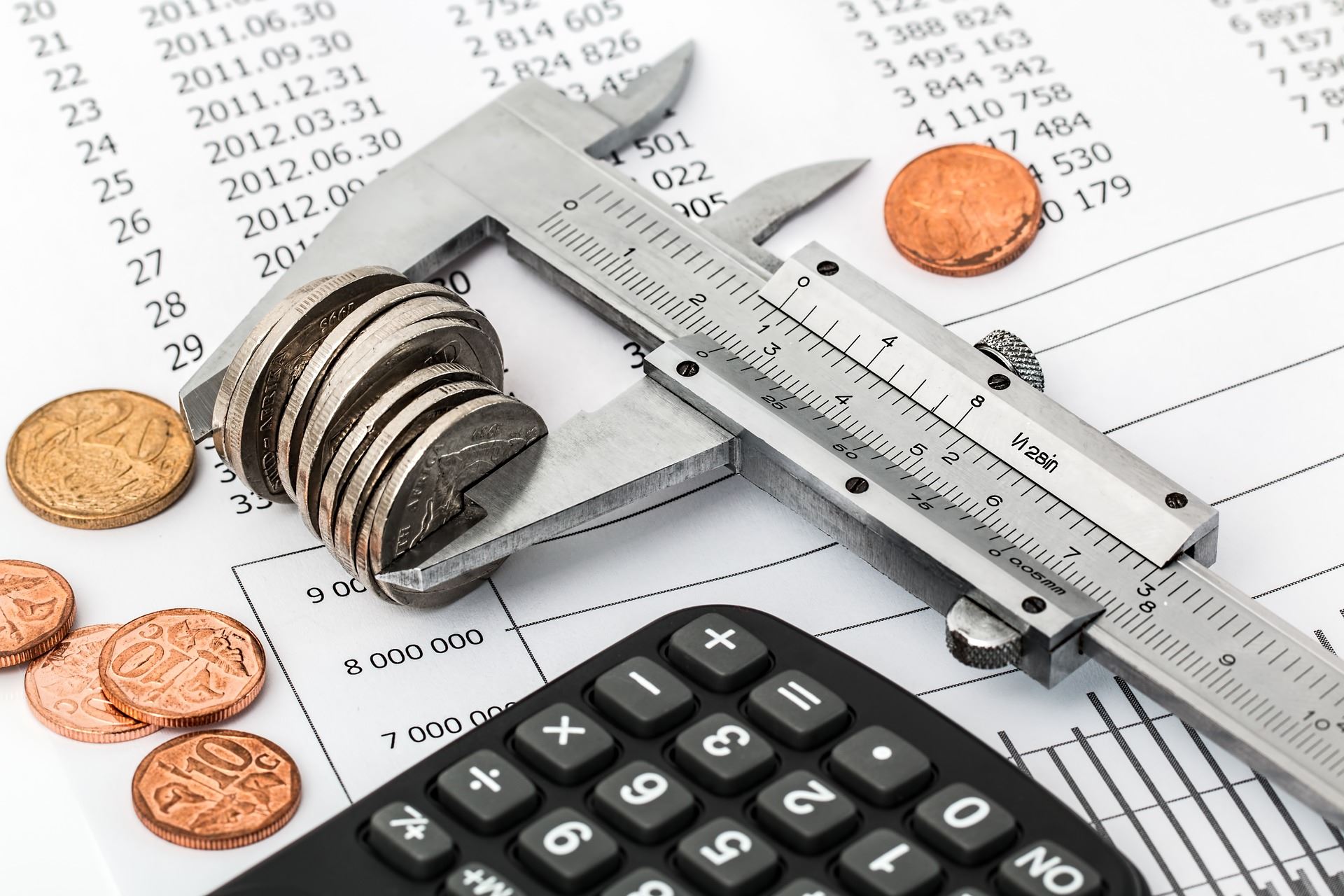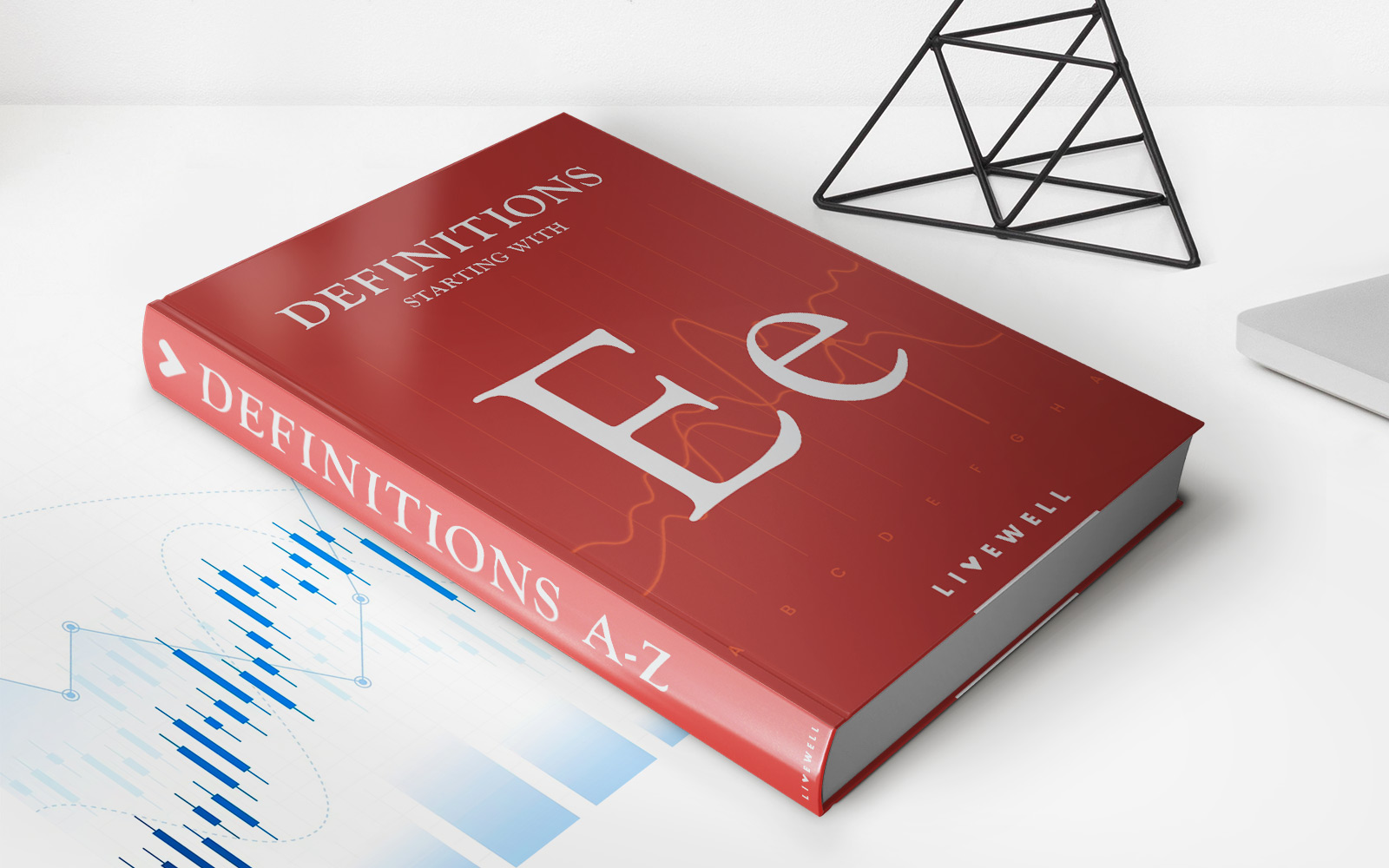

Finance
What Does Ppe Mean In Accounting
Published: October 9, 2023
Discover the meaning of PPE in accounting and how it relates to finance. Gain insights into the financial implications and importance of PPE in financial reporting.
(Many of the links in this article redirect to a specific reviewed product. Your purchase of these products through affiliate links helps to generate commission for LiveWell, at no extra cost. Learn more)
Table of Contents
Introduction
Welcome to the world of finance and accounting, where numbers tell the story of a company’s financial health. In the realm of accounting, there are numerous terms and acronyms that can seem overwhelming to those who are not well-versed in the field. One such term is PPE, which stands for Property, Plant, and Equipment.
PPE is a critical component of a company’s balance sheet and plays a significant role in determining its overall value. It represents tangible assets that are owned and used by a business to generate revenue. These assets are not intended for resale but are vital for conducting day-to-day operations.
In this article, we will explore the meaning of PPE in accounting, its recognition, measurement, depreciation, impairment, disposal, as well as its presentation and disclosure in financial statements. Understanding these concepts is crucial for investors, creditors, and other stakeholders in evaluating a company’s financial performance and making informed decisions.
So, let’s delve into the world of PPE and uncover its nuances in the realm of accounting.
Definition of PPE in Accounting
Property, Plant, and Equipment (PPE) refers to the long-term tangible assets that a company owns and uses to carry out its business operations. These assets are expected to provide economic benefits to the company over a period of time, typically exceeding one year, through use or rental to others. PPE includes assets such as land, buildings, machinery, vehicles, furniture, and equipment.
In accounting, PPE is categorized as a non-current or long-term asset on the balance sheet, as it represents assets that are not intended for immediate conversion into cash. Instead, they are used in the production or delivery of goods and services or for administrative purposes within the business.
It is important to note that PPE assets are not consumed or sold in the normal course of business operations. Unlike inventory or other current assets, which are typically sold or converted into cash within a short period, PPE is intended to be used over an extended period to generate revenue for the company.
Companies acquire PPE assets through various methods, such as purchase, construction, or lease. When an asset is purchased, the cost includes not only the purchase price but also any additional costs directly attributable to bringing the asset to its intended use, such as transportation and installation costs. Similarly, when an asset is self-constructed, the costs incurred during the construction phase are capitalized as part of the asset’s cost.
It is important to distinguish between PPE assets and intangible assets. While PPE assets are tangible and have physical substance, intangible assets lack physical form but still hold value for the company, such as patents, trademarks, or copyrights. PPE assets, on the other hand, include assets that can be seen, touched, or physically measured.
Understanding the definition of PPE in accounting is crucial in order to accurately record and report these assets in financial statements. By properly categorizing and accounting for PPE, companies can provide a more transparent and reliable view of their long-term asset base and financial position.
Recognition and Measurement of PPE
Once a company acquires a PPE asset, it needs to determine the appropriate recognition and measurement criteria for recording the asset in its financial statements. The recognized value of a PPE asset comprises its purchase cost or fair value at the time of acquisition, including any directly attributable costs to bring the asset to its intended use.
Recognition of a PPE asset occurs when the asset meets the following criteria:
- The asset is probable to generate future economic benefits.
- The company has control over the asset, which means it can use it and obtain the benefits derived from it.
- The asset’s cost can be reliably measured.
Once recognized, PPE assets are initially measured at cost. The cost includes the purchase price, any directly attributable costs, and any estimated costs to restore the asset to its original condition after its useful life.
Subsequently, PPE assets are measured using one of two methods:
- Cost Model: Under the cost model, the PPE asset is carried at its initial cost less accumulated depreciation and any accumulated impairment losses. This approach is commonly used for assets with a relatively short useful life and significant wear and tear.
- Revaluation Model: Under the revaluation model, the PPE asset is carried at its fair value at the reporting date, less any accumulated depreciation and any accumulated impairment losses. This method allows for periodic revaluation of assets to reflect their current market value. However, it is important to note that the revaluation model is not widely adopted and is typically used for assets with a more volatile market value.
The choice between the cost model and the revaluation model depends on factors such as the nature of the PPE assets, their market volatility, and the company’s reporting policies.
Regular assessments are required to ensure that the carrying amounts of PPE assets are not materially different from their recoverable amounts. If there is an indication of impairment, the company needs to perform impairment testing and recognize any impairment loss by reducing the carrying amount of the asset to its recoverable amount.
Recognition and measurement of PPE assets are essential to provide a true and fair representation of a company’s asset base and its impact on financial statements. By adhering to appropriate accounting standards and guidelines, companies can ensure the accuracy and reliability of their financial reporting.
Depreciation of PPE
Depreciation is the systematic allocation of the cost of a PPE asset over its estimated useful life. As PPE assets are not consumed immediately, depreciation allows companies to recognize the gradual reduction in the asset’s value and allocate its cost as an expense over time.
Depreciation expense is important for several reasons:
- Matching Principle: Depreciation helps in matching the cost of using the PPE asset with the revenue it generates. By spreading the cost over its useful life, the expenses associated with the asset are more accurately reflected in the same period in which it contributes to revenue generation.
- Asset Replacement: Depreciation provides a means to estimate the future replacement cost of the asset. As the PPE asset ages and approaches the end of its useful life, the accumulated depreciation helps in assessing the need for asset replacement and planning for its cost.
- Financial Statement Presentation: Depreciation expense is included in the income statement, reducing the reported profit and reflecting the ongoing wear and tear of the PPE asset. This allows for a more accurate representation of the company’s financial performance.
Several methods can be used to calculate depreciation, including:
- Straight-Line Method: The straight-line method allocates the asset’s cost evenly over its useful life. This method is simple and widely used, as it assumes a constant decrease in the asset’s value over time.
- Declining Balance Method: The declining balance method allocates a higher percentage of the asset’s cost as depreciation in the earlier years and gradually reduces the percentage in subsequent years. This method is useful for assets that generate higher returns in the initial years of their use.
- Units of Production Method: The units of production method allocates the asset’s cost based on the actual output or usage of the asset. This method is suitable when the asset’s usage directly relates to the production or service levels.
The choice of depreciation method depends on factors such as the nature of the asset, its expected pattern of usage, and industry practices. Companies need to consider both financial reporting requirements and tax regulations when selecting an appropriate depreciation method.
Accumulated depreciation is the total depreciation expense recognized on a PPE asset since its acquisition. The carrying amount of the asset is the original cost less accumulated depreciation. This value represents the asset’s net book value and is useful in determining the remaining useful life and potential impairment of the asset.
Depreciation accounting is crucial for assessing the ongoing value of PPE assets, accurately reflecting their usage and wear and tear, and facilitating strategic decisions regarding the replacement, maintenance, or disposal of assets.
Impairment of PPE
Impairment of Property, Plant, and Equipment (PPE) occurs when the carrying amount of an asset exceeds its recoverable amount. The recoverable amount is the higher of an asset’s fair value less costs to sell and its value in use.
Impairment testing is performed periodically or whenever there is an indication of impairment, such as a significant decline in the asset’s market value, technological obsolescence, changes in the economic environment, or damage from an unforeseen event. The objective is to ensure that the carrying amount of PPE assets is not stated at an amount higher than their recoverable amount.
When an impairment indicator is identified, the recoverable amount of the asset needs to be calculated. If the asset’s carrying amount exceeds its recoverable amount, an impairment loss is recognized in the financial statements. The impairment loss is determined by deducting the recoverable amount from the carrying amount of the asset.
Once impaired, the new carrying amount of the asset becomes its recoverable amount, and subsequent depreciation is based on this revised value. However, if there is a reversal in the impairment indicators in subsequent periods, the impairment loss can be reversed, but only up to the asset’s recoverable amount.
Impairment of PPE assets has significant implications for a company’s financial reporting and decision-making. It reflects the decrease in the value of an asset or its potential reduced ability to generate future economic benefits. Impairment losses impact the income statement, reducing reported profits and indicating the need to reassess the asset’s value and potential future use.
It is important for companies to assess and monitor the potential impairment of PPE assets to ensure that their financial statements accurately represent their current value. By recognizing and disclosing impairment losses, companies provide stakeholders with a transparent view of the asset’s impact on the company’s financial position and performance.
Disposal of PPE
Disposal of Property, Plant, and Equipment (PPE) occurs when a company decides to remove an asset from its operating activities. This can happen due to various reasons, such as obsolescence, damage, technological advancements, or strategic decisions.
When disposing of a PPE asset, companies need to follow specific accounting procedures to accurately record the transaction and its impact on the financial statements.
The process of disposal involves the following steps:
- Determining the carrying amount: Before disposing of an asset, the company needs to determine its carrying amount. This is calculated by subtracting the accumulated depreciation from the original cost of the asset.
- Recognizing the gain or loss on disposal: The gain or loss on disposal is calculated by comparing the proceeds from the disposal with the carrying amount of the asset. If the proceeds exceed the carrying amount, a gain on disposal is recognized. If the proceeds are less than the carrying amount, a loss on disposal is recognized.
- Removing the asset from the books: After recognizing the gain or loss, the asset is removed from the books by posting the disposal transaction. The carrying amount is eliminated from the balance sheet, and the gain or loss is reflected in the income statement.
It is important to note that the disposal of PPE assets should be disclosed in the financial statements, including the details of the asset, the gain or loss on disposal, and any related taxes or expenses incurred.
The proceeds from the disposal can take various forms, such as cash, trade-in value, or the receipt of another asset. These proceeds need to be appropriately recorded and classified in the financial statements.
Proper disposal of PPE assets is crucial for maintaining accurate and transparent financial statements. It ensures that the financial position and performance of the company are not distorted, allowing stakeholders to make informed decisions based on reliable information.
Presentation and Disclosure of PPE in Financial Statements
The presentation and disclosure of Property, Plant, and Equipment (PPE) in a company’s financial statements are important for providing stakeholders with a clear understanding of the value, utilization, and potential risks associated with these assets.
In the balance sheet, PPE assets are typically presented as a separate category under non-current or long-term assets. This allows for the distinction between current assets, which are expected to be converted into cash within one year, and long-term assets, which have a useful life exceeding one year.
The carrying amount of PPE assets is presented as the original cost of the asset less accumulated depreciation and any accumulated impairment losses. This net book value indicates the remaining value of the asset and its impact on the company’s financial position.
Companies are also required to disclose significant information about their PPE assets in the notes to the financial statements. This includes:
- Measurement basis: Companies need to disclose the measurement basis used for recognizing and measuring PPE assets, whether it is the cost model or the revaluation model.
- Depreciation policy: The accounting policy for depreciating PPE assets needs to be disclosed. This includes the method used (e.g., straight-line, declining balance), the estimated useful lives or depreciation rates, and any residual values.
- Impairment: Companies should disclose any indicators of impairment of PPE assets, impairment losses recognized in previous periods, and any reversals of impairment losses.
- Disposals and retirements: Details regarding significant disposals, retirements, or write-offs of PPE assets should be provided, including the nature of the asset, the reason for disposal, and any gains or losses on disposal.
- Commitments and contingencies: Any significant commitments or contingencies related to PPE assets, such as obligations under operating leases or legal disputes, should be disclosed.
Furthermore, companies may also provide additional information in the management discussion and analysis section of the financial statements, discussing the overall strategy, utilization, and future plans regarding PPE assets.
By providing transparent and comprehensive information about PPE assets, companies enable investors, creditors, and other stakeholders to assess the value, risk, and potential future benefits associated with these assets. This promotes transparency, facilitates informed decision-making, and enhances the overall reliability of the financial statements.
Importance of Proper PPE Accounting
Proper accounting for Property, Plant, and Equipment (PPE) is of paramount importance for several reasons:
- Accurate Financial Reporting: Properly accounting for PPE assets ensures that a company’s financial statements present a true and fair view of its financial position and performance. By recognizing and measuring PPE assets correctly, companies provide stakeholders with reliable information for making informed decisions.
- Transparency and Investor Confidence: Transparent accounting for PPE assets instills confidence in investors and creditors. By accurately disclosing the value, utilization, and potential risks associated with these assets, companies demonstrate transparency and accountability, enhancing investor trust and willingness to invest.
- Asset Management and Planning: Accurate accounting for PPE assets facilitates effective asset management and strategic planning. By recognizing the depreciation and impairment of these assets, companies can assess their remaining useful lives, plan for asset replacements, and allocate resources efficiently.
- Compliance with Accounting Standards: Proper PPE accounting ensures compliance with relevant accounting standards, such as International Financial Reporting Standards (IFRS) or Generally Accepted Accounting Principles (GAAP). Adhering to these standards enhances financial statement comparability across companies and promotes consistency in reporting.
- Assessment of Business Performance: Accounting for PPE assets allows for the assessment of a company’s operational efficiency and profitability. By understanding the cost of using these assets and the corresponding depreciation expenses, companies can evaluate their performance and identify areas for improvement.
- Asset Valuation and Impairment Recognition: Accurate accounting for PPE assets enables the recognition of impairment when the carrying amount exceeds the recoverable amount. This ensures that potential declines in asset value are properly reflected in the financial statements, preventing overstatement of asset values and mitigating future financial risks.
- Tax Considerations: Proper accounting for PPE assets also has tax implications. By accurately recording and depreciating these assets, companies can claim tax deductions and optimize their tax positions, reducing their overall tax liabilities.
Given the significant investment and impact of PPE assets on a company’s financial position, proper accounting is essential. It provides stakeholders with reliable information, supports strategic decision-making, and promotes transparency and compliance with accounting standards. Ultimately, proper PPE accounting enhances the credibility of financial statements and contributes to the overall success and sustainability of a company.
Conclusion
Property, Plant, and Equipment (PPE) are vital assets for businesses, representing tangible resources that are used to generate revenue. Proper accounting for PPE is essential for accurate financial reporting, transparency, informed decision-making, and compliance with accounting standards.
Throughout this article, we have explored the meaning of PPE in accounting and its significance in evaluating a company’s financial health. We have discussed the recognition and measurement of PPE, depreciation methods used to allocate the cost of assets over time, the implications of impairments on asset values, the proper disposal of assets, and the presentation and disclosure requirements in financial statements.
By adhering to proper PPE accounting practices, companies can provide stakeholders with reliable information about the value, utilization, and risks associated with their assets. This transparency promotes investor confidence, aids in strategic decision-making, and supports effective asset management.
Understanding the importance of PPE accounting is crucial for investors, creditors, and other stakeholders when analyzing a company’s financial position and performance. Accurate accounting allows for assessing a company’s profitability, planning for asset replacements, managing tax liabilities, and complying with accounting standards.
In conclusion, proper accounting for PPE assets is not just a matter of compliance; it is key to maintaining trust and credibility in the financial markets. By ensuring accurate recognition, measurement, depreciation, impairment, disposal, and disclosure of PPE assets, companies can provide stakeholders with a clearer view of their financial health and help drive sustainable growth and success in the long run.














